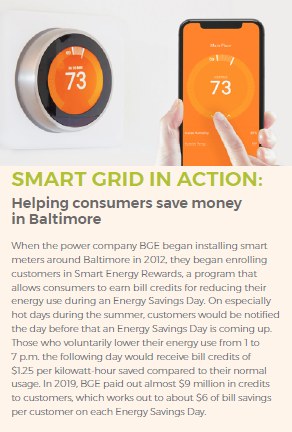

Clients choose their electricity suppliers depending on their different tariffs.

Smart grid is expected to save consumers money: feed-in tariff, pre-paid, net metering, etc. Recent projects use Broadband over Power Line (BPL) communications, DSL and Fiber Optic cables, or wireless technologies such as mesh networking and GPRS. PLC is one of the technologies used for automatic meter reading and Advanced Metering Infrastructure systems.
Smart grids benefits software#
Internet makes the integration of complex equipment and software possible with real-time management dashboards and decision support tools.

Internet ensures that all the components of the grid - from transformers to power lines to home electric meters - have IP addresses and are capable of two-way communication. The main benefit is Load balancing that matches supply and demand. Smart grids are designed for bidirectional energy flows allowing for distributed generation (small power producers). The smart grid will use sensors to monitor power quality and automated self-healing of anomalies in the network. Smart meters replaces analog mechanical meters with digital meters that add continuous communications so that monitoring can be done in real time, and can be used as a gateway to demand response-aware “smart devices”. In the 1980s, Automatic meter reading was used for monitoring loads from large customers, and evolved into the Advanced Metering Infrastructure of the 1990s, whose meters could store how electricity was used at different times of the day. Smart meters are opportunities to take advantage of improvements in electronic communication technology. Power and distribution systems need to be maintained while there is an absence of vision and energy-saving culture… Transmission and distribution losses are estimated from the discrepancy between power produced and power sold to end customers, assuming no theft of utility occurs. The growing demand results in poor power quality including (rolling) blackouts, power cuts, and brownouts. The fixed or dual (day/night) tariffs are applied due to limited data collection. In traditional grid, metering of variable electricity consumption is necessary on a per-user basis in order to allow appropriate billing. A smart grid is an electrical grid or network that uses digital communication technologies to gather information from suppliers and consumers, and act in an automated mode to improve the efficiency, reliability, economics, and sustainability of the production and distribution of electricity.


 0 kommentar(er)
0 kommentar(er)
